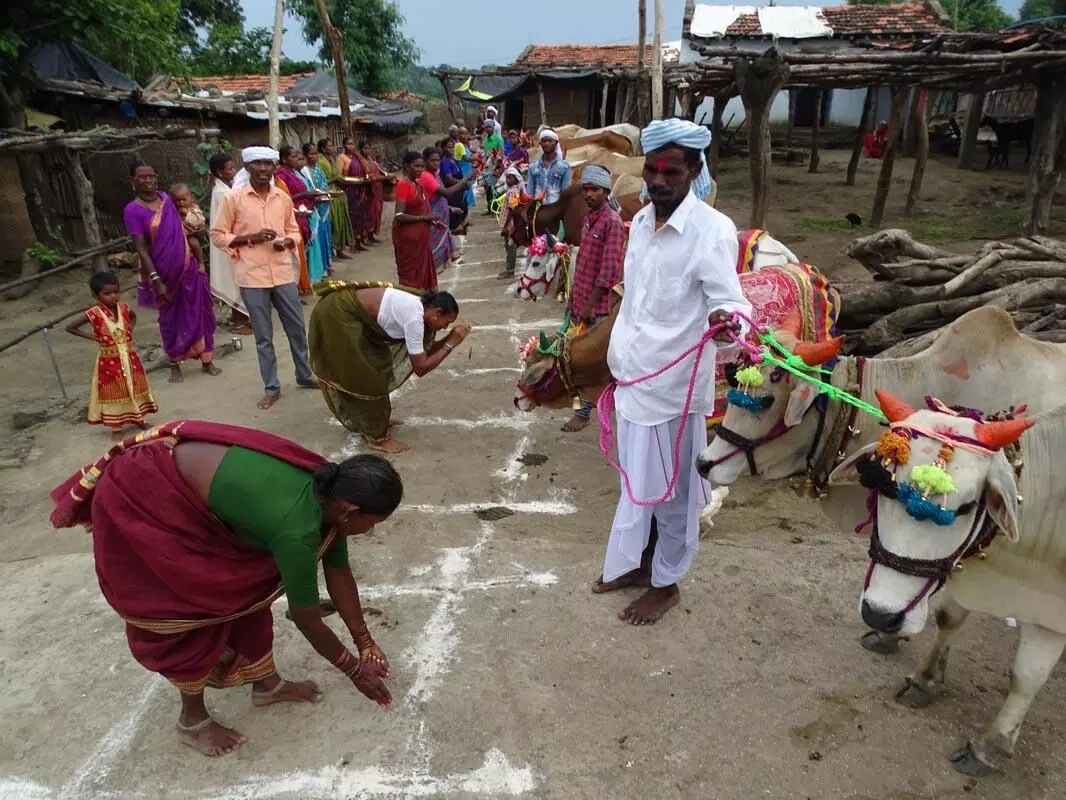Adilabad: Come, join colorful animal 'Pola' festival that binds diverse people culturally
By S. Harpal Singh
ADILABAD: If there is one festival in India that is restricted to celebrating the role of farm animals in human ethos but also denotes cultural unity among diverse people across borders of different states including tribals and non-tribals, it is the colorful Pola, known in different states by different names.
It is known as Bail Pola in Maharashtra, Bendur in Karnataka, and Pola Amavasya in Chattisgarh and falls on the new moon day which ends the month of Shravan according to the Hindu calendar or the month of Pora in Gondi which will be August 26 and 27 this instance. (Bendur is, however, celebrated a month earlier and Pune farmers celebrate the Bail Pola a month later but on the day of Amavasya itself.)
Pola is essentially an event to thank the farm animals, especially the bullocks and cows for their support to the farming community. Po means bullock in Marathi and la means pertaining to, according to Sajal Kulkarni, the Maharashtra State coordinator for Revitalising Rainfed Agriculture Network, based at Nagpur.
This is a period marking the end of the hard part of agriculture work for the bullocks which calls for a well-deserved holiday for the animals. "As the farmers stay away from fields on new moon day, the community must have chosen the Amavasya to celebrate Pole," opined Kulkarni who is an acknowledged expert on livestock breeds in the country.
On the morning of Pola, the bullocks are taken to respective water bodies close to villages and given a proper wash. In the afternoon, the animal horns are dolled up. Their horns are colored. New reins and an aesthetically made joole or a shawl-like covering are used to deck up.
In the evening the bullocks are taken to the local temple for the customary circumambulations signifying worship of Lord Shiva and other local deities. The bullock is considered to be the vahana or transport of Lord Shiva.On returning, the women of the household worship the animals which are also fed with the specially made savories, especially the Puranpoli or the sweetened roti stuffed with chickpea flour batter.
Adivasis of erstwhile have a more elaborate celebration during the day in that the process of thanksgiving to the farm animals includes their worship by a given entire family. The festival is also significant for them as it marks the end of Pora month which is considered a 'dangerous' phase, health wise owing to the spread of seasonal diseases.
During the month, aboriginal children use the khodang or the stilts to walk around in the inevitable slush outside their villages to avoid communicable diseases. Pola brings an end to this vulnerable phase and the tribals discard the stilts on the next day which is known as badaga locally and kar in Marathi which also marks the month-long period of staying away from meat and liquor.
Over the years, the celebrations have recorded a downtrend for various reasons. The number of farmer families owning cattle is going down steadily which means there is a proportionate decrease in the gusto associated with the festivities.
"Mechanisation of farming may have had its impact on the ownership of farm animals but it is the sending of these animals to slaughterhouses that have played havoc with it," the expert from Maharashtra said.
"Nevertheless, farmers are not averse to using bullocks for farm work," he added talking of hope for the full revival of the festival which will be symbolic of the revival of the use of cheaper energy from cattle.
"The government should provide bullocks on subsidy like they subsidize farm equipment. This will be very helpful to farmers who cultivate in rainfed conditions," he suggested.